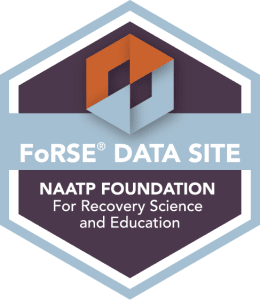Over 70% of patients who receive treatment for substance abuse have endured traumatic experiences. Moreover, 59% of adolescents who experience traumatic events develop addictions later in adulthood.
The link between trauma and addiction is real and complex. Traumatic experiences can lead people to abuse substances. Drugs themselves can exacerbate the negative effects of trauma.
The nature of this link is hard to untangle. When we examine the facets and effects of traumatic experiences, we can see how they set the stage for substance abuse and other types of addiction. It also becomes clear that any effective treatment of drug addiction must be trauma-informed.
Sometimes in day-to-day speech, people use the term “trauma” to refer to any stressful experience. Or, people may use the term interchangeably with Post-Traumatic Stress Disorder (PTSD). To understand how trauma impacts drug use and alcoholism, let’s first unpack exactly what trauma is.

Trauma is an overwhelming, painful experience. Trauma can encompass physically, psychologically, and emotionally painful experiences.
The defining trait of a traumatic experience is overwhelming. The experience temporarily overwhelms the individual’s ability to cope with the distress.
Physical, psychological, and emotional pain may seem different from the outside. But, our central nervous system actually processes all three types of pain in the same way. Sensory processing does not vary much based on input.
The long-term impact of trauma on the central nervous system underlies the most lasting trauma symptoms.
At the moment, a traumatic event causes an intensely heightened emotional state. The nature of the state varies. But, it will often resolve itself into shock or denial at the moment or immediately afterward.
The long-term impact of trauma varies. Some people have a higher trauma threshold than others. When a person experiences pain inflicted by other people rather than due to a natural event, they’re more likely to experience trauma.
ACEs are traumatic childhood experiences.
Painful experiences are more likely to be traumatic to children because they have fewer coping mechanisms. Children experiencing multiple ACEs are less likely to have adults in their lives who model positive coping skills.
They also have a lower capacity for resiliency, as their brains are still growing. ACEs harm brain development.
Acute trauma stems from a single traumatic event. It is a single intense experience, and it can cause short-term PTSD symptoms.
The impact of acute trauma typically lessens over time. That said, it can still cause disruptive symptoms that deserve treatment and still feed into trauma and addiction.
PTSD is a set of long-term symptoms caused by one or more traumatic experiences. It can be debilitating. PTSD calls for serious mental health intervention.
C-PTSD is a set of long-term symptoms caused by multiple chronic traumatic experiences.
C-PTSD is typically caused by living for an extended period of time in a traumatic environment. For example, living in a war zone, in an abusive household, or in extreme poverty can cause C-PTSD.
Many symptoms overlap. But, C-PTSD is more likely to cause ongoing emotional dysregulation than typical PTSD.

When patients endure traumatic experiences, they may experience effects and symptoms. Professionals categorize these as trauma disorders. These effects and symptoms fall into five categories, and each one can affect trauma and addiction.
Insomnia and other sleep disorders disrupt the sleep cycle. For some trauma survivors, hyper-vigilance causes insomnia. Hyper-vigilance keeps a person on high alert, constantly on the lookout for danger.
Sleep disorders disrupt the body’s healing process. Without enough sleep, people think less clearly, feel pain more intensely, and make poorer decisions.
Trauma alters the brain. A person may process stimuli associated with traumatic memories differently than other stimuli. Stimuli can be anything: an image, a sound, or even a smell. These stimuli can then trigger panic attacks, flashbacks, depersonalization, or derealization.
Panic attacks, depersonalization, and derealization are disruptive out-of-body experiences.
Panic attacks are rapid-onset symptoms in response to a trigger. Racing heartbeat, sweat, shakiness, and a fight-flight-freeze response are all panic attack symptoms.
Depersonalization is the sense of detachment that your “self” is not truly you. A person experiencing depersonalization dissociates their sense of self from their body.
Derealization is the foreboding sense that every physical thing around you is not real, even other people. Some trauma survivors describe it as the sensation of knowing that you’re dreaming. But, it occurs while you are actually awake.
Emotional dysregulation is an intense emotional response to a stimulus. It is akin to having emotionally burned skin. When a person experiences emotional dysregulation, day-to-day negative experiences can trigger emotional reactions.
The reactions may include crying, embarrassment, rage, or overwhelming loneliness.
These day-to-day experiences are not traumatic. Instead, these are typical experiences. Someone rejecting your invitation, making a paperwork mistake at work, or seeing a sad video online can trigger a reaction.
An individual struggling with emotional dysregulation experiences normal negative events as potentially traumatic. This is due to the impact of previous trauma. It can also be an innate result of divergent brain development, which exists in ADHD and other disorders.
Like insomnia, emotional dysregulation can be a factor when a person makes impulsive, risky choices.
Alexithymia is the experience of disconnection from your own emotional state. It also causes a “flat” tone of voice or body language. Alexithymia makes it more challenging to accurately read other people’s emotions.
Alexithymia can be innate. However, emotional suppression or detachment to cope with trauma can cause Alexithymia.
Executive dysfunction makes it hard to plan and execute tasks. People who struggle with executive dysfunction often get distracted. They can also find themselves paralyzed by indecision over even small choices.
A “simple” task, like washing the dishes, can be overwhelming for someone who struggles with executive dysfunction.
Executive dysfunction is caused by problems with the circuitry of an individual’s frontal lobe.
Some innate conditions, like ADHD, cause frontal lobe underdevelopment of divergent development. However, traumatic experiences can also impact frontal lobe development. So, trauma also causes executive dysfunction.
The effects and symptoms of trauma impact a person’s wellbeing directly. These effects also negatively impact an individual’s ability to thrive in four spheres that make life meaningful.
People who’ve experienced trauma often struggle in school, at work, and with relationships. They also face barriers to cultivating spiritual well-being. It is challenging to connect to spiritually sustaining communities. This lack of connection can cause problems with trauma and addiction.
People who experience emotional dysregulation and executive dysfunction often struggle in school.
These symptoms cause adolescents with PTSD to drop out of high school at disproportionately high rates. Trauma survivors are less likely to attend or complete post-secondary education.
Trauma survivors experience higher rates of unemployment and under-employment.
In part, this is because the effects of trauma make it challenging to complete work tasks. Trauma symptoms make it hard to stay organized, deal with setbacks, and think through problems clearly.
Chronic panic attacks and sleep deprivation can make even showing up to work impossible. The resulting physical exhaustion can prevent someone from even getting out of bed.
If trauma symptoms disrupt an individual’s education, they are also less likely to get a job they find personally meaningful. Jobs people can get without post-secondary degrees are less likely to pay well. This makes it challenging to access mental healthcare.
Trauma symptoms negatively impact relationships. Romantic relationships, families, and friendships are hard to sustain.
For example, keeping commitments requires a degree of executive function a trauma survivor may lack. Emotional dysregulation and panic attacks can get in the way of resolving normal conflicts.
Without commitment and conflict-resolution skills, relationships weaken or fall apart.
Trauma survivors struggle to experience spiritual wellbeing.
Depersonalization can create a negative sense of the “soul” being trapped in the body. This can lead people to destructive spiritual conclusions. Numbness can prevent positive spiritual experiences.
At the same time, the symptoms that make it hard to maintain relationships also disrupt attempts to connect to a spiritual community.
Trauma survivors deserve care and effective treatment for symptoms. Unfortunately, the effects of trauma can make accessing care challenging.
Some people turn to substances or alcohol to alleviate symptoms. This is because drugs are more readily available than medical and mental health care.
On top of self-medication, some trauma symptoms in and of themselves make an individual more likely to abuse substances.
This is why trauma and addiction are such a problem, and the problem is only growing bigger.

It can be hard to get drug addiction help. Barriers to accessing effective mental health treatment include:
Trauma survivors are disproportionately low-income. This can be due to intergenerational poverty, where extreme poverty itself is a traumatic experience. The trauma, then, makes it hard to follow the path from school success to high-paying work.
People without much income may not be able to afford health insurance or copays on treatment and medication. They also are less likely to own a car or have access to affordable transportation.
Trauma survivors may come from a culture that views mental health treatment as weak or inappropriate. Some cultures highly value privacy and independence. Mental health treatment can involve sharing private, painful experiences. This can appear to go against a person’s cultural values.
Cognitive barriers, like executive dysfunction, can make it hard for a person to figure out the steps to access care. Following through on the steps they already know exist can feel overwhelming.
Executive dysfunction can also make choices from among multiple possible next steps paralyzing.
For example, a list of many treatment centers in one region gives a patient choices about which one to contact. However, executive dysfunction can cause someone to freeze and not contact anyone.
The belief that mental health treatment won’t work is sometimes based on experience. Often, a person’s first attempt to treat mental illness or the effects of trauma does not succeed. This failure can be demoralizing, even though trying a different treatment could still work. This belief could also be cognitive distortion. In this case, the belief treatment won’t work the person from trying treatment. This creates a self-fulfilling prophecy.

The less income a person has, the less likely they are to access effective, trauma-informed care. Likewise, the fewer healthy relationships an individual has, the less likely they will have social support. Support improves resilience and makes treatment more likely to work.
Trauma’s effects negatively impact income and relationships. So, trauma survivors are more likely to seek to alleviate their pain outside of a healthcare setting. Often this creates a cycle of trauma and addiction that can takes years to break.
Without access to formal care, drugs and alcohol are often the most available ways to alleviate symptoms right away. Alcohol and other sedatives can prevent panic attacks. In the short term, amphetamines can improve executive function.
Insomnia, emotional dysregulation, emotional numbness, and executive dysfunction are intense. All contribute to impulsive behavior. Trauma survivors are more likely to give in to the impulse to try drugs they know are dangerous.
Sometimes this is because the “high” or dopamine rush gives dramatic relief from numbness. Other times, an individual’s thought is too impaired. They cannot think through the long-term consequences of substance use.
Drug use can also worsen PTSD symptoms. Drug addiction and alcohol abuse can worsen insomnia and paranoia.
Substance abuse can make it harder to think clearly. Suppressing panic or negative, dysregulated emotions with drugs can make it harder to deal with those emotions in the long run.
Moreover, substance abuse can further worsen a person’s performance at school or work. It can make relationships even harder to maintain. As a result, a person may have even fewer resources than before to get effective treatment, thus worsening the cycle of trauma and addiction.
Trauma symptoms can cause a person to develop maladaptive ways of thinking. These are cognitive distortions.
Cognitive distortions happen when emotions don’t match the context. A person’s mind attempts to make observable reality match their internal, emotional reality. A person cannot deny their own emotional experience.
They also cannot change how they feel simply from the sheer force of their own will.
Yet, when that internal experience is out of sync with external reality, it hurts. A trauma survivor may tell themselves a story that re-interprets reality. The story makes external reality fit their internal emotional experience.
These thoughts explain the pain and rationalize substance abuse. People find themselves trapped in a cycle of drug addiction and trauma symptoms. Cognitive distortions can prevent them from getting help.
Drug addiction is not a disease caused by a germ. However, the Biopsychosocial Model of illness considers substance use disorder a disease.
The Biopsychosocial Model states that diseases are prolonged states of distress. These states have three causes:
These three causes are present in most types of disease. People develop drug addiction, also called substance use disorder, due to these three factors

The biological factors that increase the risk of drug addiction are sometimes genetic. Biological differences also contribute to how different individuals respond to trauma. A given stimulus (like a drug) can be more or less rewarding.
People’s brains can produce different amounts of dopamine, or no dopamine at all, in response to the same drug. Likewise, people’s central nervous systems vary in terms of how much pain relief they experience from alcohol or opioid drugs.
Finally, physical illnesses can exacerbate the long-term impact of trauma. Physical illness can also push a person’s experience of a painful event over the trauma threshold.
It’s important to treat the biological differences caused by trauma. It’s also key to understand how different people’s bodies and brains are predisposed to substance use.
Treating the biological components of drug addiction can involve prescription medications. These can treat the psychiatric symptoms of PTSD. Some of these medicines alter a body’s neurochemistry or hormones to alleviate symptoms.
It can also involve treatments for any underlying physical illness. Pain caused by inflammation can be treated with corticosteroids or anabolic steroids, for example. Primary care physicians and mental health professionals work together to treat a patient.
Cognitive Behavioral Therapy (CBT) is the most researched type of therapy. Its successes are well documented.
CBT therapy uses a cognitive-behavioral framework to understand and treat illness. A person’s thoughts, emotional states, and behaviors impact one another. This creates health or illness.
CBT therapy can target and change cognitive distortions. It can empower patients to bring their internal, emotional self in alignment with external reality safely.
CBT practices also bring people into more positive emotional states. The therapy focuses on changing behaviors rather than trying to change emotions directly.
So, rather than trying to “calm down” when they feel scared or panic, a person may learn specific physical things they can do to reduce their body’s physiological fear response. Then, they’ll indirectly move into a calmer emotional state.
Changing emotional states improve emotional regulation and decreases other trauma symptom severity.
The discovery of the cognitive-behavioral framework in the 1960s had a huge, positive impact on the efficacy of trauma therapy.
In the last few decades, practitioners have built on the cognitive-behavioral model to develop two related therapies: Dialectical-Behavioral Therapy (DBT) and Eye Movement Desensitization and Reprocessing (EMDR) therapy.
DBT and EMDR take CBT concepts, then add new elements tailored to treat specific symptoms.
DBT incorporates mindfulness to help patients strengthen emotional regulation and emotionally intense experiences. It also uses dialectical processing to bring conflicting experiences into harmony.
The goal of DBT is to experience less emotional pain in day-to-day life when confronted with typical stressors. Like CBT, DBT can address cognitive distortions and focus on proactive, constructive behaviors.
EMDR helps patients reprocess traumatic experiences. It is designed to teach the body that those experiences are in the past and that in the present moment, they are safe.
EMDR helps reduce the frequency and severity of panic attacks and depersonalization episodes. It can also improve sleep by reducing nightmares.
Social factors can increase or decrease a person’s risk of developing substance use disorder. These factors can also make treatment more or less effective.
Social factors that increase the risk someone will abuse substances are:
These social factors contribute to or worsen trauma symptoms and feed into the trauma and addiction cycle. They also decrease the likelihood of long-term recovery from substance abuse.
Social factors that offer protection against substance use disorder are:
Many of the social factors decrease the risk of substance use disorder. These also mitigate the risk of long-term PTSD after a traumatic experience.
To recover from drug addiction, people need treatment that addresses the root causes of addiction. Effective recovery calls for trauma-informed practice.
Trauma-informed care understands the impact of trauma on substance use disorder. Biological, psychological, and social factors that affect our responses to trauma and addiction. When we address them, we can recover.
If you or someone you love is struggling with addiction, or if you want the tools to heal from traumatic experiences, talk to us. We’ll answer any questions you have about trauma and addiction, alcohol and drug rehab, and how to make it work for you.
Contact
31 S. Braddock Street
Winchester, VA 22601
Phone: 540-535-1111
Fax: 540-450-1205
admissions@bridgingthegaps.com
Addictions
Modalities


